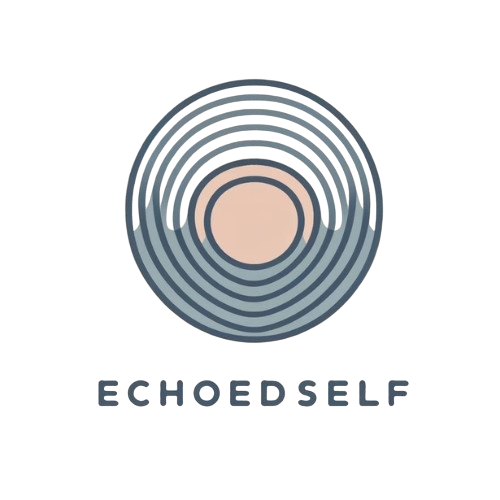The dance between light and dark: Exploring emotional balance in art
Shadows stretch across the canvas, interrupted by the soft glow of light breaking through. In art, as in life, contrast tells a story—of tension and release, struggle and peace, movement and stillness. The interplay between light and dark is not merely a compositional tool; it is a mirror for the inner world, a metaphor for emotional balance and healing.
Artists have long been drawn to this duality. Each brushstroke, each decision between hard and soft edges, warm or cool tones, boldness or subtlety, reflects the delicate choreography of emotion. By embracing both light and darkness, artists open themselves to a deeper, more truthful self-expression—one that allows emotions to be acknowledged, felt, and integrated.
The symbolism of light and dark in emotional healing
Light and dark are not opposites—they are partners in revealing truth. Without shadow, there is no depth. Without light, there is no clarity. This tension mirrors emotional balance: joy and sorrow, love and grief, presence and absence—all coexisting.
In the healing process, working with contrast in art invites the artist to explore the nuance of emotion. Darkness need not represent despair. It can be the quiet of introspection, the stillness before insight. Similarly, light is not always cheerfulness—it can be revelation, fragility, or the clarity that follows chaos.
To paint with both is to honor the complexity of being human.
Contrast as emotional language
Contrast is more than visual—it is visceral. Sharp shadows may express fear, control, or inner rigidity. Gentle transitions suggest softness, acceptance, and healing. As artists navigate between these modes, they begin to externalize internal conflict and resolution.
Techniques for emotional contrast might include:
Layering: Building dark tones and gradually allowing light to emerge, like clarity surfacing after confusion.
Erasing and blending: Softening edges to represent surrender or the process of letting go.
Rhythmic mark-making: Juxtaposing jagged, urgent strokes with gentle, sweeping movements to reflect emotional tension and release.
This process becomes a meditation—one where the artist does not strive to "fix" emotions, but to hold space for their ebb and flow.
The emotional temperature of color: Warm and cool tones
Color speaks its own language. Warm tones—reds, oranges, ochres—pulse with energy, passion, and transformation. Cool tones—blues, purples, shadowed greens—invite reflection, serenity, and depth.
When these temperatures meet, they tell layered emotional stories:
A warm glow within cool tones can symbolize resilience, hope breaking through grief.
A fiery burst against a stormy sky reflects urgency, conflict, or a moment of upheaval.
Gradual shifts between warmth and coolness mirror transitions, healing, or integration.
By intentionally working with color as emotion, artists can tap into memory, mood, and metaphor, giving their work both emotional resonance and visual poetry.
Shadow and light as emotional archetypes
In Jungian psychology, the "shadow" represents the aspects of self we avoid or deny. Light, by contrast, symbolizes consciousness, awareness, and growth. In art, both archetypes are welcome—and necessary.
Creating shadow-driven art can allow repressed emotions to surface safely. A heavy composition, dominated by rich blacks or murky tones, may reflect sorrow, mystery, or internal tension. Introducing points of light—gold leaf, white ink, soft pastels—can symbolize insight, breath, or beginnings.
These compositions don’t need to “solve” the shadow. They are acts of witnessing. In allowing both elements to co-exist, the artist begins to experience emotional integration—where contradiction becomes wholeness, and pain becomes part of the path to peace.
Emotional healing through the dance of contrast
Contrast in art mirrors contrast in healing. Some emotions come fast and loud; others arrive in whispers. Light does not erase shadow—it reveals what the darkness holds. Shadow does not negate light—it defines its edges, its softness, its power.
Engaging with both light and dark invites healing through:
Emotional honesty: Allowing sadness, rage, grief, or joy to be painted without editing or explanation.
Physical release: Using motion, texture, and color to move energy through the body.
Reflective practice: Returning to earlier layers, noticing where tension has softened or where light has begun to break through.
This process doesn’t promise clarity with every piece. But it does offer truth. And in truth, there is healing.
Integrating light and shadow into daily creative practice
The dance between light and dark is not a one-time exploration—it’s a rhythm to return to. For those seeking to deepen this emotional dialogue in their art, consider these practices:
Contrast sketchbooks: Alternate pages of light and dark compositions, allowing each to influence the other.
Movement painting: Let your body move in response to music, emotion, or memory—allowing the contrast to form through energy.
Mixed media layering: Combine torn paper, paint, graphite, and fabric to physically embody emotional depth and reassembly.
Journaling alongside art: Reflect on what the contrast reveals emotionally. What feels heavy? What feels open?
Through consistent practice, the page becomes not just a surface for art, but a space for listening—to the self, to the shadow, and to the light that always follows.
Holding space for all that you are
To engage with contrast in art is to acknowledge the truth that no feeling exists in isolation. Grief can hold beauty. Light can carry grief. We are not meant to flatten our emotional range but to deepen it—to let all parts breathe.
When we create from this space of openness, art becomes more than image. It becomes relationship. A relationship between light and dark, presence and absence, expression and reflection.
Let your art be the place where shadows stretch and light spills in.
Let it be honest.
Let it be whole.
